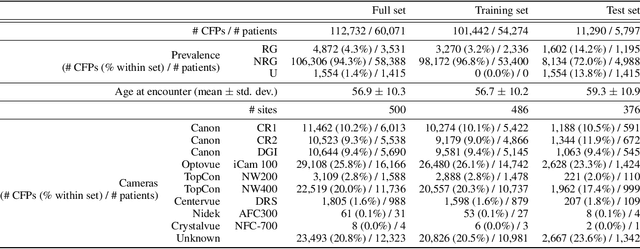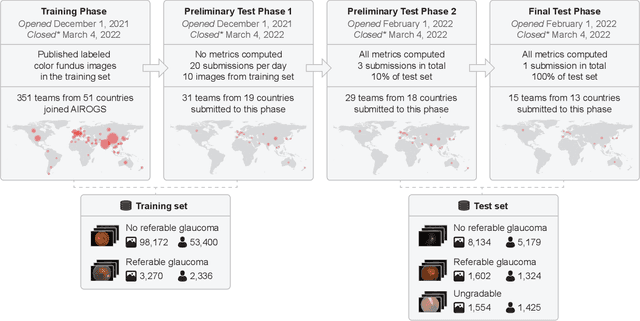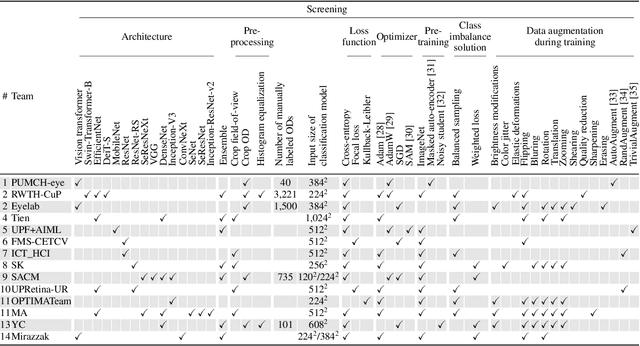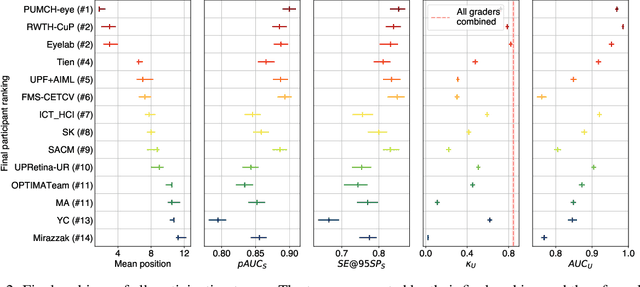Temirgali Aimyshev
AIROGS: Artificial Intelligence for RObust Glaucoma Screening Challenge
Feb 10, 2023



Abstract:The early detection of glaucoma is essential in preventing visual impairment. Artificial intelligence (AI) can be used to analyze color fundus photographs (CFPs) in a cost-effective manner, making glaucoma screening more accessible. While AI models for glaucoma screening from CFPs have shown promising results in laboratory settings, their performance decreases significantly in real-world scenarios due to the presence of out-of-distribution and low-quality images. To address this issue, we propose the Artificial Intelligence for Robust Glaucoma Screening (AIROGS) challenge. This challenge includes a large dataset of around 113,000 images from about 60,000 patients and 500 different screening centers, and encourages the development of algorithms that are robust to ungradable and unexpected input data. We evaluated solutions from 14 teams in this paper, and found that the best teams performed similarly to a set of 20 expert ophthalmologists and optometrists. The highest-scoring team achieved an area under the receiver operating characteristic curve of 0.99 (95% CI: 0.98-0.99) for detecting ungradable images on-the-fly. Additionally, many of the algorithms showed robust performance when tested on three other publicly available datasets. These results demonstrate the feasibility of robust AI-enabled glaucoma screening.
A Review of Modern Approaches for Coronary Angiography Imaging Analysis
Sep 28, 2022



Abstract:Coronary Heart Disease (CHD) is a leading cause of death in the modern world. The development of modern analytical tools for diagnostics and treatment of CHD is receiving substantial attention from the scientific community. Deep learning-based algorithms, such as segmentation networks and detectors, play an important role in assisting medical professionals by providing timely analysis of a patient's angiograms. This paper focuses on X-Ray Coronary Angiography (XCA), which is considered to be a "gold standard" in the diagnosis and treatment of CHD. First, we describe publicly available datasets of XCA images. Then, classical and modern techniques of image preprocessing are reviewed. In addition, common frame selection techniques are discussed, which are an important factor of input quality and thus model performance. In the following two chapters we discuss modern vessel segmentation and stenosis detection networks and, finally, open problems and current limitations of the current state-of-the-art.
 Add to Chrome
Add to Chrome Add to Firefox
Add to Firefox Add to Edge
Add to Edge